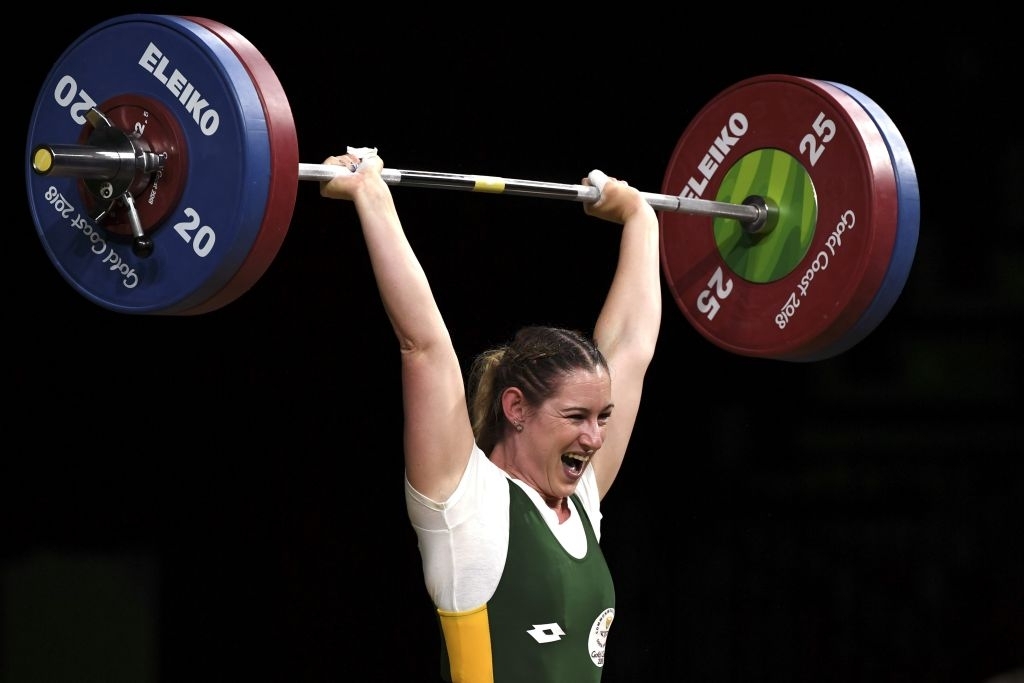When you think of the jerk, it is almost always the split jerk. However, some Weightlifters will perform the power jerk at a very high level.
But if you’re a split jerker, why and when would you perform the power jerk? How do you perform the power jerk so it translates to your split jerk?
Table of Contents
How To Perform The Power Jerk
The Starting Position
The power jerk starts with the barbell in the front rack position placed on the shoulders. When performing the power jerk as the only exercise, the bar should be taken out of the rack or off the squat stands.
Power cleaning the barbell first would change the exercise into a complex and may fatigue you for the power jerk exercise.
Set your stance exactly how you would when performing a push press or split jerk. This should be with the feet approximately shoulder-width apart.
Your weight should be through your full foot but slightly towards your heels.
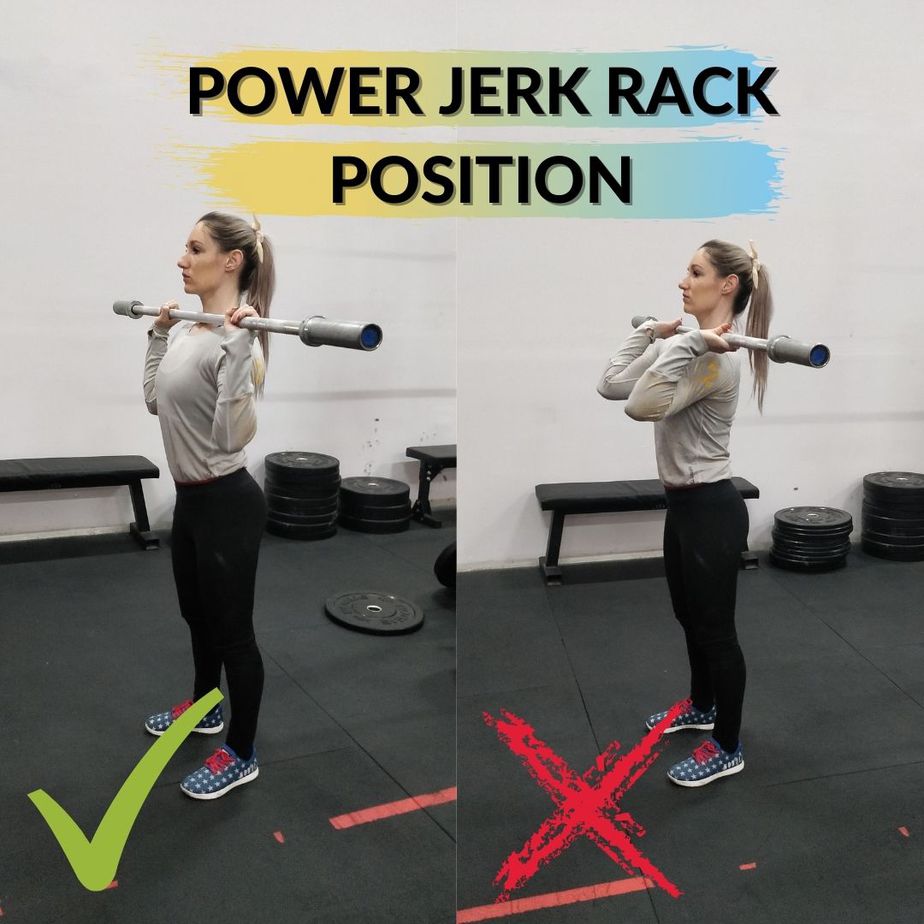
The Dip & Drive
To initiate the dip, think about a string pulling your tailbone straight down to the platform. This will ensure you dip straight while keeping your ribs and pelvis stacked in line under the barbell.
Your body weight should be close to your heels to ensure the dip is straight. The knees will move slightly out as you dip down which will provide a spring or coil-like tightness and stop your knees from moving too far in front of the body.
Once you get to approximately the quarter squat position, reverse the dip into a powerful drive phase pushing through the full foot resulting in the triple extension of the hip, knee, and ankle. As the barbell comes off the shoulders, you will punch with the arms simultaneously with the momentum from the legs.
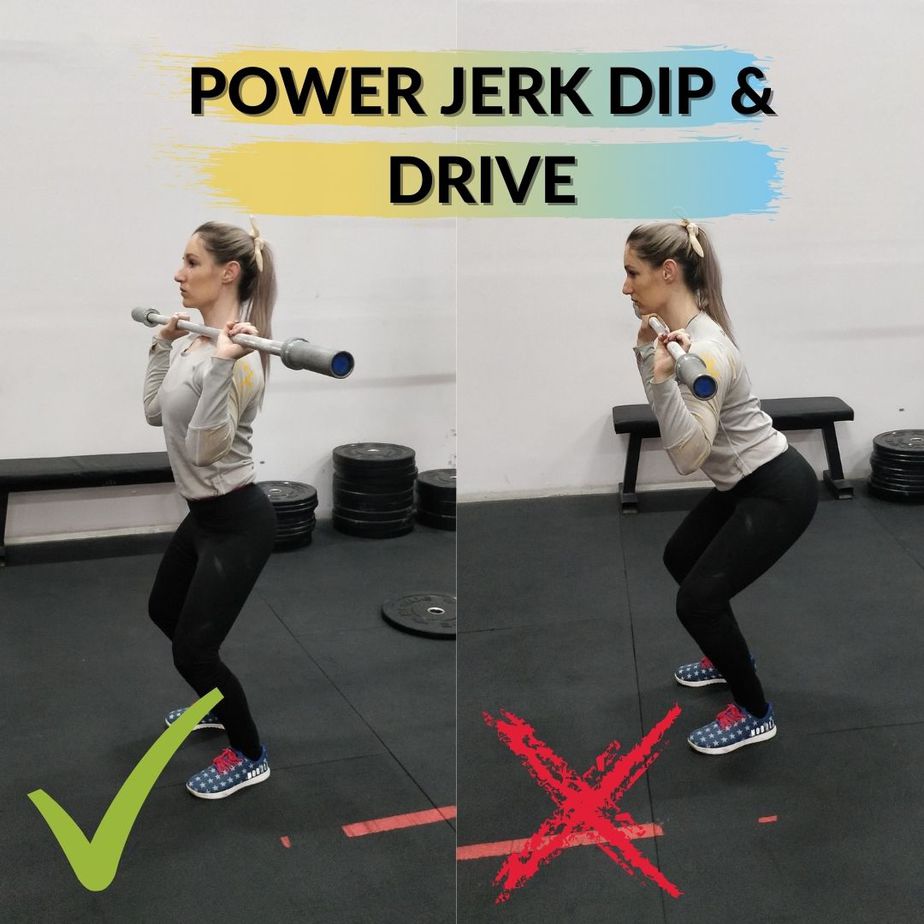
The Catch
Continue to punch with arms to the overhead lockout position with the head through to create a stable position. The feet will move slightly out to the side to a position similar to that you would receive a clean.
Your lockout will sync with dropping under the barbell to receive the bar with the knees slightly bent reducing the distance the bar has to travel compared to the push press.
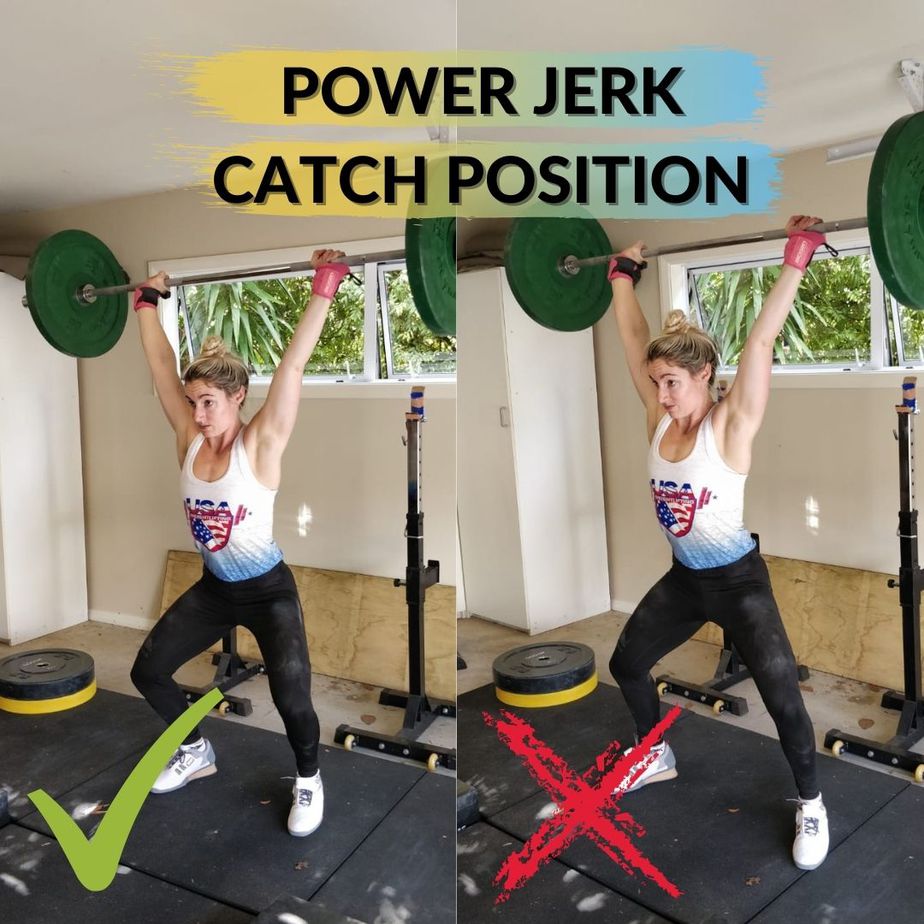
Common Power Jerk Mistakes
These common power jerk mistakes will be in sequential order from the starting position through to the catch.
Setting Up With The Elbows Too High
While you want to have high elbows in the front rack position when receiving a clean, having the elbows further down is ideal when performing overhead movements. You want the forearm to be more vertical so the direct line of force travels through the forearm, wrist, to the bar.
Having the elbows too high doesn’t allow you to push up against the barbell as you don’t have any direct line of force pushing from under the barbell.
Starting With Your Knees Bent
This mistake isn't so common but I've seen it been taught by some coaches. While there usually isn't a completely wrong way of performing a lift as everyone has their differences, standing in the front rack position with the knees bent before the dip and drive is wrong and is disadvantageous to your ability to jerk big weights overhead.
By starting with your knees bent, you minimize the distance of the dip and reduce the elastic energy produced resulting in a slower, weaker drive phase.
Dipping Forward Toward The Toes
This is probably one of the most common mistakes when it comes to the power jerk or any other jerk movement. Dipping toward the toes has a cascading effect resulting in inefficiencies throughout the movement.
Firstly, the dip and drive itself becomes weak as you are not able to push through the full foot. Secondly, dipping toward the toes throws the bodyweight and bar forward losing some of the vertical momentum to horizontal movement.
Lastly, this forward movement then forces the bar to travel up and forward rather than up and back resulting in either a missed lift or having to chase the bar.
Dropping Suddenly With The Dip
The dip should be smooth and rhythmic. Some Weightlifters may treat this portion violently with a rapid dip before the drive phase. This causes the barbell to separate from the shoulders causing you to lose connection with the bar before it comes crashing back to the shoulders at the bottom of the dip slowing the reversal of the dip and drive, and therefore, losing power during the drive phase.
The violent, rapid explosion should be reserved for the drive phase with the dip setting up the correct positions to apply maximum force and power vertically.
Dipping The Hips Backwards
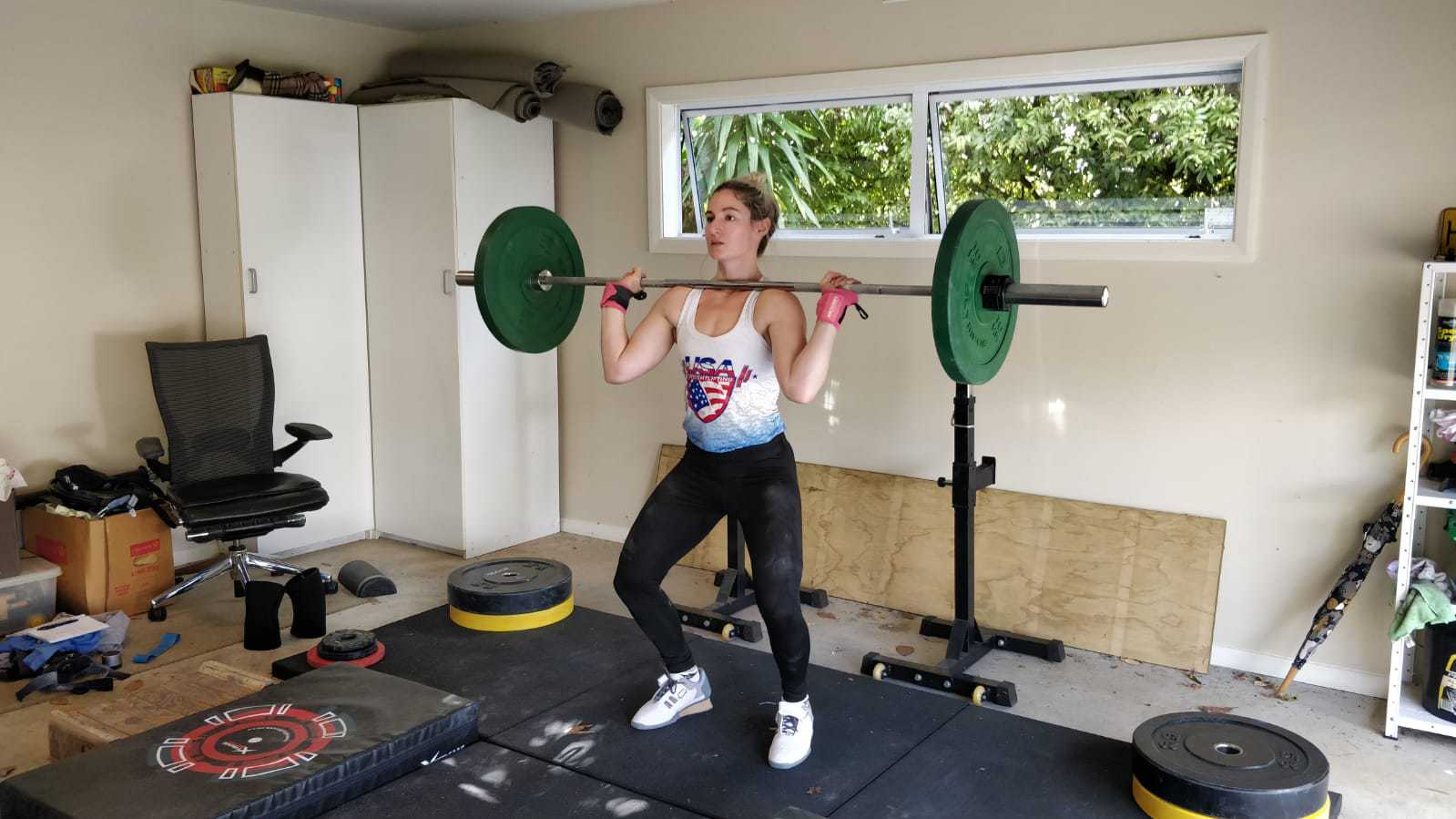
Most beginner Weightlifters will run into this problem. Sitting back in the dip like they would during a squat. This causes similar problems to dipping toward the toes as it forces the back angle to change to a bent-over position.
This creates a line where the bar must be projected in front. Further, maintaining a solid rack position is near impossible as the supporting body is no longer directly under the barbell. The hips and back are behind the barbell which creates a weak position to drive from.
Catching The Bar In Front
While catching the bar in front is often a symptom of some of the above mistakes, some athletes may catch the bar in front by not pushing the head through at lockout. You’ll often see team sport athletes finishing their overhead movements like this.
The catch position looks like a standing incline press as the back is leaning back slightly with the arms in front. This can either be a mobility issue where the Weightlifter can’t physically get their arms straight overhead or a habit that needs breaking.
Receiving Position Of The Feet Too Wide
To catch the bar higher as the load gets heavier, rather than receiving the barbell in a lower position, some Weightlifters may opt for a different strategy and move the feet wider. This will ultimately limit the load that can be lifted and create bad habits that may translate to doing similar during the clean.
Why Use The Power Jerk?
Progression Of The Push Press And Regression Of The Split Jerk
The next step after learning the push press and before the split jerk is to learn how to drop under the bar and punch it to the receiving position. The power jerk is easier to learn than the split jerk and teaches similar mechanics to the split jerk.
Corrects The Timing Of The Dip And Drive
The push press is great for teaching the ability to drive the barbell with the legs while simultaneously pushing with the arms. However, the timing is different with the jerk as you will drop under the bar after the drive phase.
The power jerk allows the Weightlifter to train the dip and drive without having to worry about the split of the legs.
Develops Speed And Power
The power jerk is a much faster lift than the push press. In that way, it helps to develop speed, power, and the ability to drop quickly under the barbell.
Which Muscles Does The Power Jerk Work?
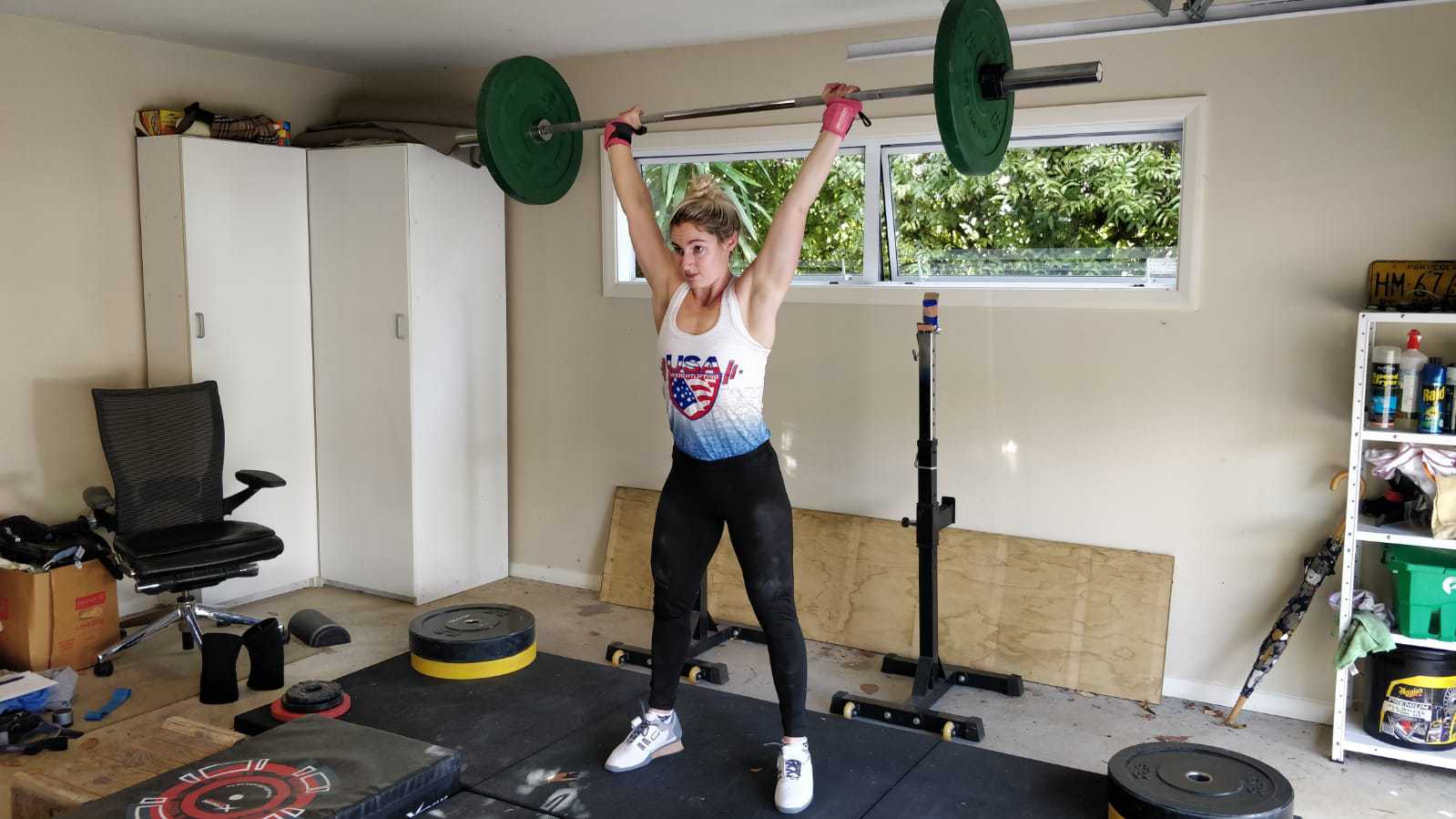
Contrary to what people may think, the power jerk, while a full-body exercise, primarily targets the lower body. Specifically, the quads, glutes, and calves. Because the barbell isn’t pressed into the overhead position, the upper body is primarily used to stabilize the bar. Specifically, the shoulders, back, and triceps.
When To Use The Power Jerk
The power jerk is a great way for beginner Weightlifters to learn the timing of the dip and drive before learning the split jerk. Secondly, it's a variation of the split jerk that some Weightlifters may use after competition during an off-season period for some variation.
Finally, some Weightlifters opt for the power jerk to be their primary jerk movement. In this case, you would be performing the power jerk during all of your jerk sessions.
How Many Sets and Reps Of The Power Jerk?
Generally, you will perform 4-6 sets of 1-3 reps at approximately 65-90% of your clean & jerk 1RM. The range for loading with the power jerk is wide as it depends on if you are training it for technical purposes with speed or heavier for more strength.
Power Jerk Variations
Push Jerk
The only difference between the push jerk and the power jerk is that you don't move your feet in the push jerk. You'll often see this variation in CrossFit as it is faster to get the barbell overhead and then back down to the shoulders when they are performing many reps.
As a Weightlifter, you won’t use this variation in your training.
Behind The Neck
The behind the neck power jerk is used to fix the line of the barbell and reinforce dipping and driving in a straight line. If a Weightlifter usually dips forward, having the bar behind the neck will provide a feeling of bodyweight being closer to the heels and will cue the athlete to dip straight down.
Squat Jerk
The squat jerk is a rare jerk variation and is mainly used in China. I don't advise anyone to use this variation as the margin for error is very, very small making it much harder to be a successful squat jerker.
The squat jerk is the same as a power jerk except you will catch the bar in a full squat position. This requires insane mobility through the thoracic spine and shoulders so it’s not for everyone.

